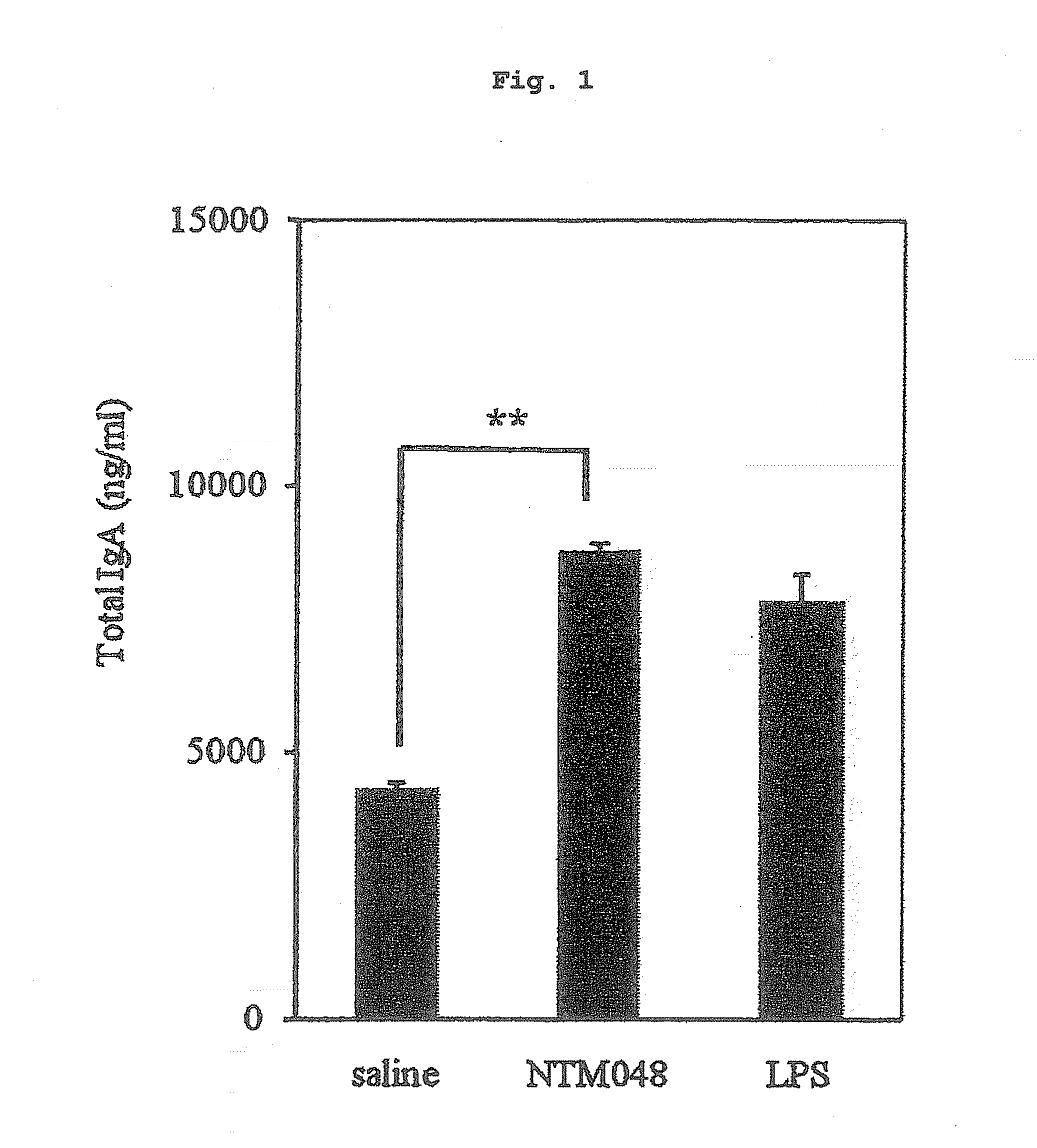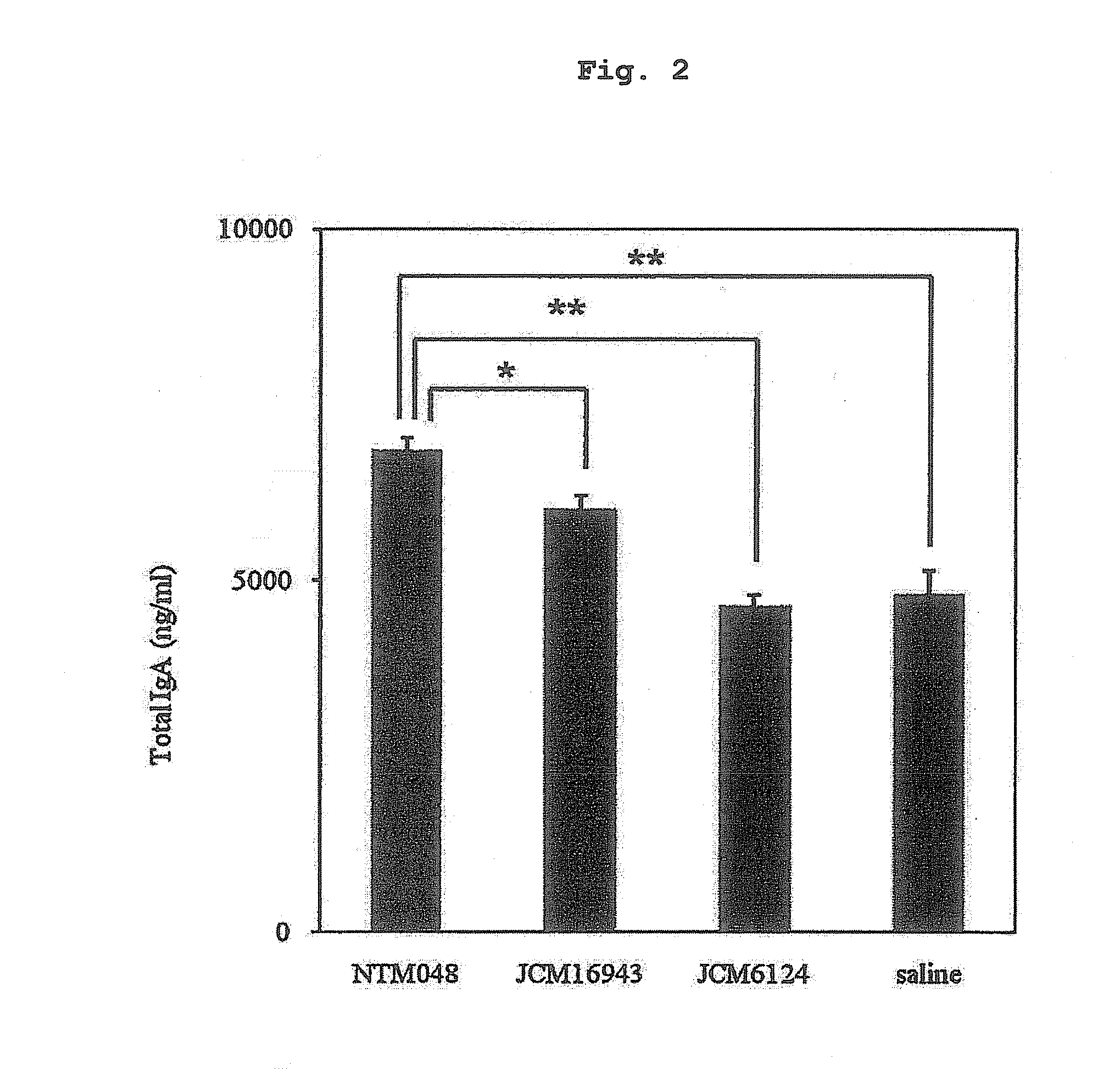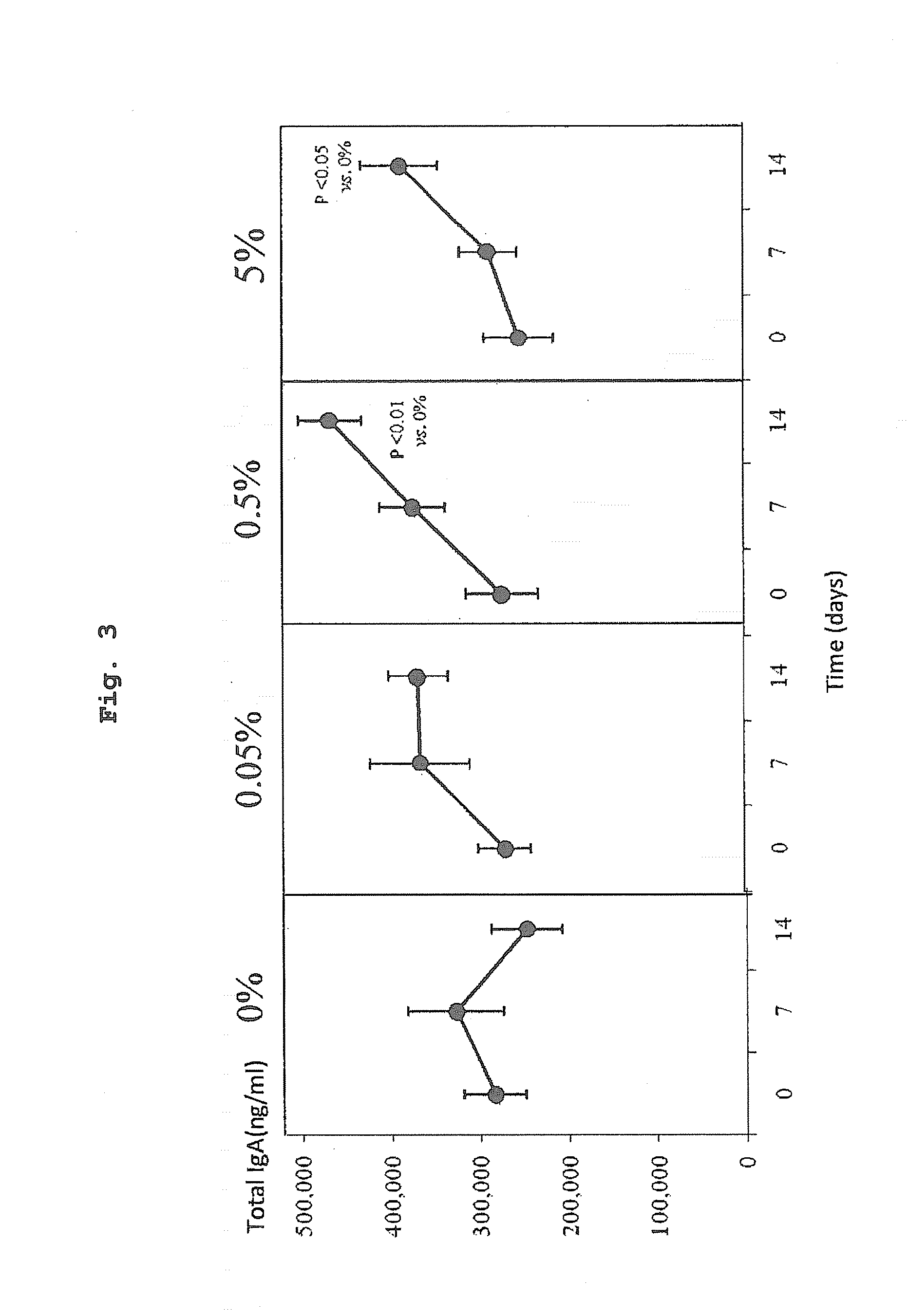Exopolysaccharide produced by lactic acid bacterium
a technology of lactic acid bacteria and polysaccharide, which is applied in the field of polysaccharide to achieve the effect of promoting activity and iga production
- Summary
- Abstract
- Description
- Claims
- Application Information
AI Technical Summary
Benefits of technology
Problems solved by technology
Method used
Image
Examples
reference experimental example 1
Preparation of Peyer's Patch Cell by Production Method Using Collagenase
[0090]Small intestine Peyer's patch was isolated from 7-week-old BALE / cA mouse. The Peyer's patch was washed with RPMI-10 medium, transferred to a sterile dish containing 5 mL of IEC-dissociating solution (25 mM HEPES, 5 mM EDTA, 1 mM DTT in RPMI-10), and incubated in a CO2 incubator at 37° C. for 45 min. After pipetting well, the cells were transferred to a sterile dish containing 5 mL of EDTA solution (5 mM EDTA in RPMI-10), and incubated in a CO2 incubator at 37° C. for 5 min. After further pipetting well, the Peyer's patch was transferred to a 50 mL tube containing 5 mL of digestion solution (400 U / mL collagenase, 30 U / mL DNase in RPMI-10) and a stirrer, and incubated with stirring at 37° C. for 30 min. After completion of enzyme decomposition, Peyer's patch cells suspended in the medium were cloudy. They were centrifuged (1400 rpm, for 7 min, 4° C.), and 4 mL of the supernatant was removed by suction. A sus...
reference experimental example 2
Measurement of IgA Production Amount
[0091]About 200 strains of lactic acid bacteria isolated from various raw vegetables and pickles were investigated for the IgA production promoting ability by using mouse small intestine Peyer's patch cells.
[0092]The concentration of Peyer's patch cells obtained by the aforementioned production method using collagenase was adjusted to 2.5×105 cells / mL in a CD3 antibody-coated 96 well plate (manufactured by BD Biosciences). To the suspension of Peyer's patch cells was added an equal amount of lactic acid bacteria having a concentration adjusted to 10 μg / mL with saline after liquid culture in MRS medium, and the mixture was reacted at 37° C. under 5% CO2 anaerobic conditions for 5 days, and the total IgA amount produced from the Peyer's patch was measured using Mouse IgA ELISA Quantitation Set (manufactured by BETHYL). The results of lactic acid bacteria NTM048 strain are shown in FIG. 1.
[0093]Two strains of lactic acid bacteria (NTM047, NTM048) hav...
reference experimental example 3
Comparison with Type Strain
[0094]By a method similar to that of Reference Experimental Example 2, IgA production inducing activity in vitro was compared between NTM048 strain, and JCM16943 strain and JCM6124 strain by using Peyer's patch cells. The results are shown in FIG. 2.
[0095]NTM048 strain was confirmed to highly induce IgA production as compared to other strains of Leuconostoc mesenteroides.
PUM
| Property | Measurement | Unit |
|---|---|---|
| concentrations | aaaaa | aaaaa |
| concentrations | aaaaa | aaaaa |
| concentrations | aaaaa | aaaaa |
Abstract
Description
Claims
Application Information
 Login to View More
Login to View More - R&D
- Intellectual Property
- Life Sciences
- Materials
- Tech Scout
- Unparalleled Data Quality
- Higher Quality Content
- 60% Fewer Hallucinations
Browse by: Latest US Patents, China's latest patents, Technical Efficacy Thesaurus, Application Domain, Technology Topic, Popular Technical Reports.
© 2025 PatSnap. All rights reserved.Legal|Privacy policy|Modern Slavery Act Transparency Statement|Sitemap|About US| Contact US: help@patsnap.com



